Searsia incisa var. effusa
| Botanical Name | Searsia incisa var. effusa |
|||||||||||
| Family | Anacardiaceae - The mango family. |
|||||||||||
| Pronunciation | SEER-zee-a in-SIGH-suh var. eff-YOO-suh |
|||||||||||
| Common Name(s) |
English: Rub-rub currant
Afrikaans: Baardbessie
IsiXhosa: unongqutu
|
|||||||||||
| Plant Group |
|
|||||||||||
| Plant Size |
|
|||||||||||
| Position |
|
|||||||||||
| General Information |
|
|||||||||||
| Specific Information | Searsia incisa is more often a shrub than a tree. The leaves are dark green above with the under-surface covered with creamy, soft hairs. The fruits, although edible, are small and have to be rubbed between the hands for some time to get the hairs off. This shrub abounds in the bush in our area of the Eastern Cape. The flowers, and especially the fruits are most attractive, but it does get woody and does not respond well to pruning. The leaves turn yellow and fall off in late summer leaving a large 'twig-ball' until the new leaves emerge. An ideal species for boundary planting, a wild garden or an exclusion zone - the dense twigs make good nesting and roosting places for wild birds and the fruit is an added attraction. |
|||||||||||
| Ad Break | ||||||||||||
| Flowers | ||||||||||||
| Description | sprays of small, star-shaped flowers in dense heads on the ends of branches |
|||||||||||
| Season |
|
|||||||||||
| Colour |
|
|||||||||||
| Growth Rate |
|
|||||||||||
| Plant Uses |
|
|||||||||||
| Distribution and Habitat | between Worcester in the Western Cape and East London in the Eastern Cape, along the coastal belt; and from Garies north to the Richtersveld in the Northern Cape, scattered in open scrub and along the banks of streams and rivers |
|||||||||||
| Planting Suggestions | Plant in a large hole mixed with compost, fertiliser and some bonemeal. Mulch well, water regularly until established and then if you wish, reduce the amount of water until the shrub is fully reliant on local weather conditions. |
|||||||||||
| Medicinal Uses | No data found. |
|||||||||||
| Ad Break | ||||||||||||


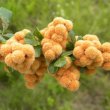

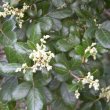
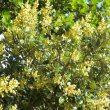
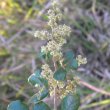
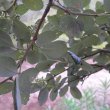
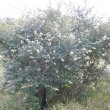
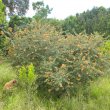
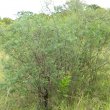
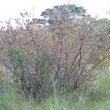


Discuss this plant
Share knowledge, ask a question or give an experience.